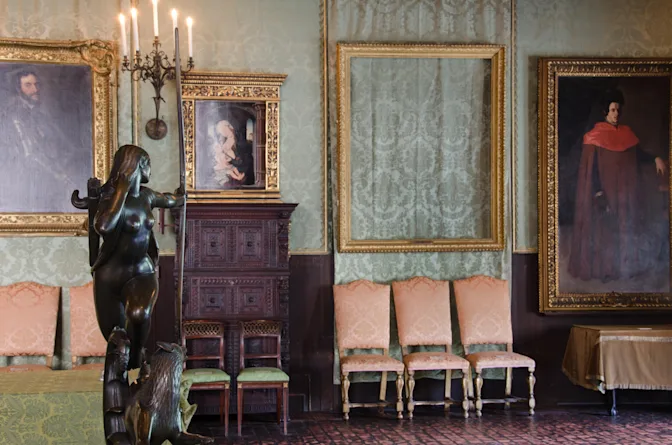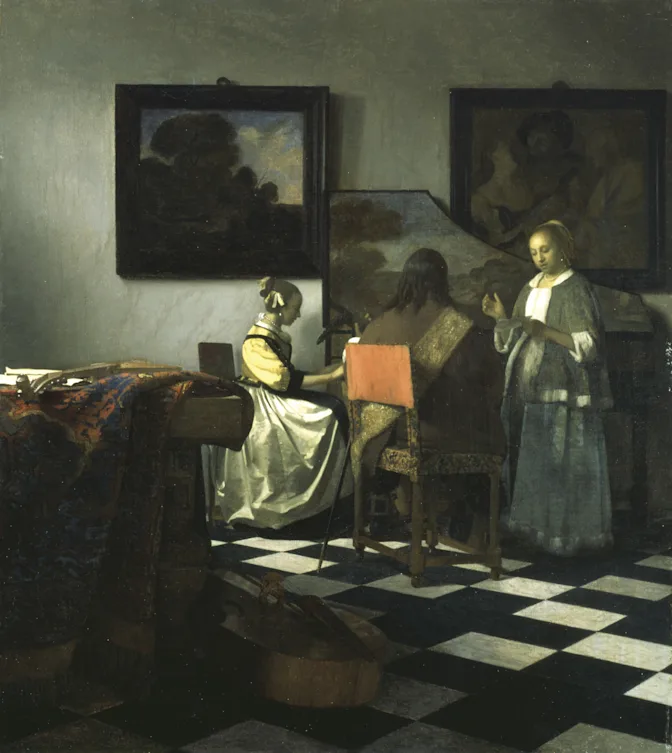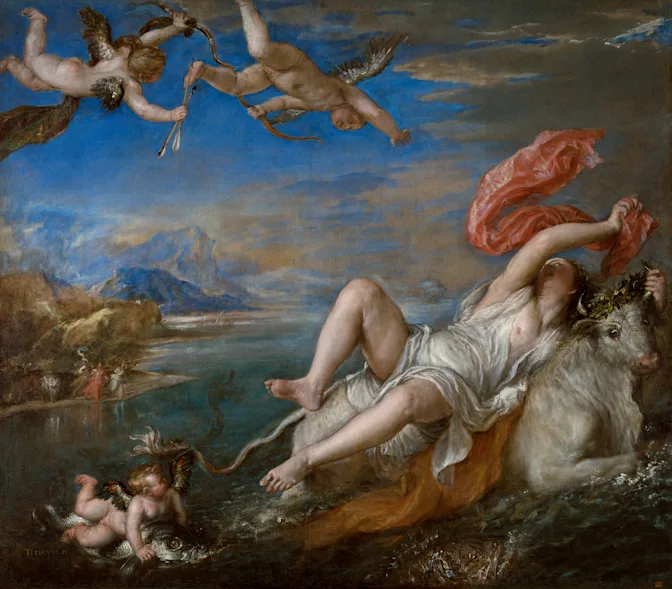
Here's Why This Museum Has Empty Frames
Rembrandt's "The Storm on the Sea of Galilee" (1633). Public domain.
On a quiet night in March 1990, the Isabella Stewart Gardner Museum in Boston fell victim to the largest art theft in history. This heist stripped the museum of 13 invaluable pieces and plunged the art world into a mystery that remains unsolved more than three decades later. Spanning the spectrum from Vermeer's "The Concert" to Rembrandt's "The Storm on the Sea of Galilee," the stolen collection, now valued at over $500 million, left a void in the art world and a series of haunting, empty frames on the museum's walls.
The Night of the Heist
 An empty frame remains where "The Storm on the Sea of Galilee" was once displayed. Picture provided by the FBI showing the empty frames for missing paintings after the theft at the Isabella Stewart Gardner Museum. Public domain.
An empty frame remains where "The Storm on the Sea of Galilee" was once displayed. Picture provided by the FBI showing the empty frames for missing paintings after the theft at the Isabella Stewart Gardner Museum. Public domain.
The heist was meticulously planned and executed with a precision that fooled the museum's security system and staff. Two men, disguised as police officers and capitalizing on the revelry of St. Patrick's Day, deceived the guards into granting them entry under the guise of investigating a disturbance. Once inside, they quickly secured the museum, incapacitating the guards, and removing the selected artworks with astonishing efficiency and boldness. Their escape, carrying away centuries of history and beauty, was as silent as their arrival, leaving behind few clues and many questions.
The Art Taken and Left Behind
 Johannes Vermeer, "The Concert" (1664). Public domain.
Johannes Vermeer, "The Concert" (1664). Public domain.
The choice of artworks taken and those left untouched adds another layer of mystery to the heist. The thieves targeted specific treasures, including three works by Rembrandt and Vermeer's "The Concert," considered one of the most valuable stolen pieces in the world. Yet, they inexplicably bypassed other priceless works like Titian's "The Rape of Europa." This selective looting has led to various theories, including the possibility of a "hit list," though the true motivation and criteria for the selection remain subjects of speculation.
 "The Rape of Europa" (1562) by Titian is one of the most famous works in the museum. Public domain.
"The Rape of Europa" (1562) by Titian is one of the most famous works in the museum. Public domain.
Aftermath and Investigations
In the wake of the heist, the FBI and the art world embarked on a quest to recover the stolen masterpieces. In 2013, the FBI identified two suspects, both deceased, believed to be part of a larger criminal network that had attempted to sell the art. Despite these leads, the artworks' whereabouts have vanished into the criminal underworld, possibly scattered across private collections inaccessible to the public and law enforcement alike.
The Isabella Stewart Gardner Museum, bound by its founder's will to preserve the collection as it was, maintains the empty frames as a somber reminder of the loss. Meanwhile, the museum and authorities continue to search for the stolen art, offering a $10 million reward for information leading to their recovery.
The Gardner Museum heist remains not just an unsolved crime but a poignant narrative about the fragility of cultural heritage. It stands as a testament to the enduring allure and value of art, transcending the material to touch upon the very essence of human creativity and history.
References: What to Know About the Gardner Museum Heist | 12 Facts About the Isabella Stewart Gardner Museum Robbery—the World's Biggest Art Heist























